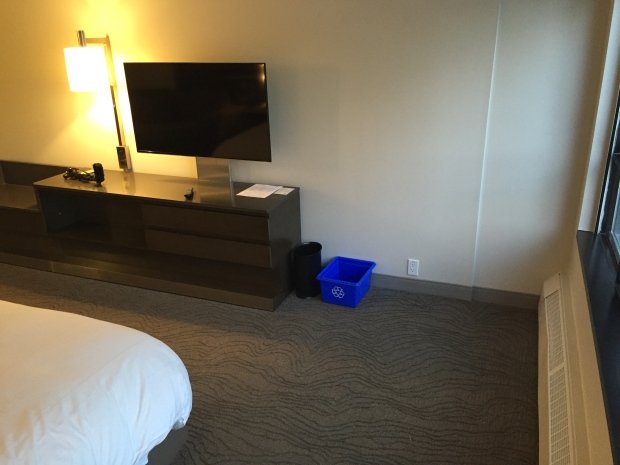Removing Features and Options For Customers? The Case Of Marriott’s Missing Desks
Many travellers to one of Marriott Hotels brands, particularly business travellers, found something missing. Desks on which to work.
According to reports in January, 2016, Marriott, in an attempt to satisfy Millennial visitors, decided that since most people have smaller devices, and want hotel rooms where people could gather, that desks, or at least traditional desks, were not only unnecessary, but underdesirable.
Some visitors reported that when asked to be moved to a room with a desk, so they could comfortably work on their laptops, that the entire hotel had been made “deskless”.
Several photos posted by unhappy visitors and curious reporters showed an empty space where the desk used to be, indicating that the issue wasn’t one of space requirements.
While we’ll see whether Marriott continues to remove desks from other brands, or whether Marriott puts back the desks, there are a few fundamental things to be learned about customer experience. Before we look at more general issues, is Marriott alone in taking away features from customers?

LinkedIn: Removing Features One By One
Online companies are constantly tweaking, changing things up, and yes, removing features. Linkedin, over the last eighteen months, has removed capabilities, and is finally drawing member attention, and defections.
For example, one of the features offered readers, and contributors is the ability for readers to follow or connect to writers they want to read on an ongoing basis. Contributors, when posting articles, were informed that their content would be distributed to all their followers and connections.
However, somewhere along the way, LinkedIn decided to algorithmically decide who would be notified among followers of the particular author, thus limiting the reach of contributors, despite their “promise” of distribution to all who asked to receive the updates.
As an aside, they forgot to update the “this has been distributed to all you followers” message, and both the change and the “lie” have disturbed many. Some felt deceived, lied to, and betrayed.
Facebook has long done the same thing, controlling who among one’s friends see what updates.
In fact, LinkedIn and Facebook have been madly removing functionality for customers at a rather rapid rate.
The Folly of Removing Functionality For Customers
There are some good reasons for removing functionality and options for customers, some of them economic, and some of them in pursuit of simplifying the customer experience. Let’s look at some of the issues here that are relevant for business and customers alike.
- Customers don’t necessarily want to be bombarded by too many choices, so it can make sense to remove options that cater to the few.
- When introducing new options and features that “replace” older ones in terms of functionality, cost savings don’t accrue unless one can get rid of the older option. Running two different systems, for example — a keycard AND a physical key makes maintenance more expensive.
On the other hand:
- Removing customer choice is almost always a bad thing, unless you want to alienate your customer base, or at least a part of it.
- Removing customer choice without letting them know in advance (as seems to be the case with the Marriott brand) is a roadmap to very angry customers). It’s one thing to remove functionality and inform customers before they use the facility, and it’s a completely different thing to have customers find out the reduced functionality only after they visit their rooms.
- If you want to remove functionality, you need to be absolutely sure you know how your customers use what you offer. In the case of Marriott, who uses various ways to “learn about their customers”, it appears they just didn’t ask the correct questions.
Their explanation of wanting to cater to Millennials is obviously based in part on inaccurate stereotypes, PLUS asking the wrong questions.
It’s doubtful that Marriott asked whether Millennials would be offended by having a desk in the room, or asked straight out, whether they wanted the desks removed. - Further, it’s one thing to remove functionality, but to allow customers the ability to have it “the old way”, and it’s completely different to remove choice for customers. In both the Marriott and LinkedIn examples, features and functionality have been completely removed. In Marriott hotels of the particular brand, the desks have been removed from EVERY room.
The Outcomes?
We don’t know yet what Marriott will do, or whether LinkedIn will eventually restore the multitude of features and functionality it has removed over the past years.
Much will depend on how much tolerance their customers and users will exhibit.
What we do know is that removing functionality and choice, under almost any guise, is going to upset customers, and draw unwanted media attention as people express their frustrations online, and media catch on to the issue.
The moral of the story? Remove features at your own risk, know your customer base, and don’t rely on “experts” to tell you what your customers want, and always allow customer choice when possible.
And….
If you are a hotel, you should think twice, then thrice about removing beds in your rooms because [group] prefers a more basic accommodation.


